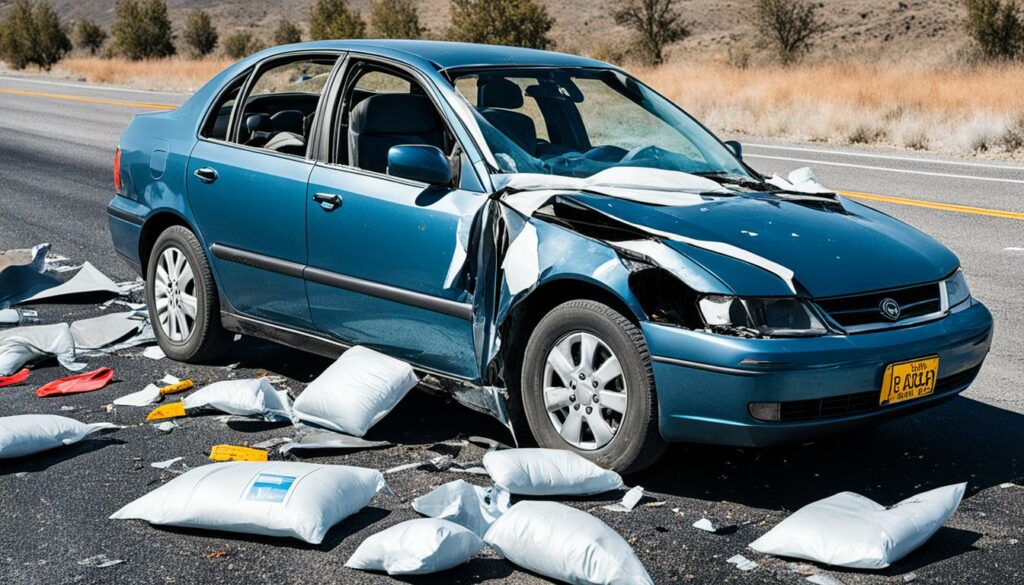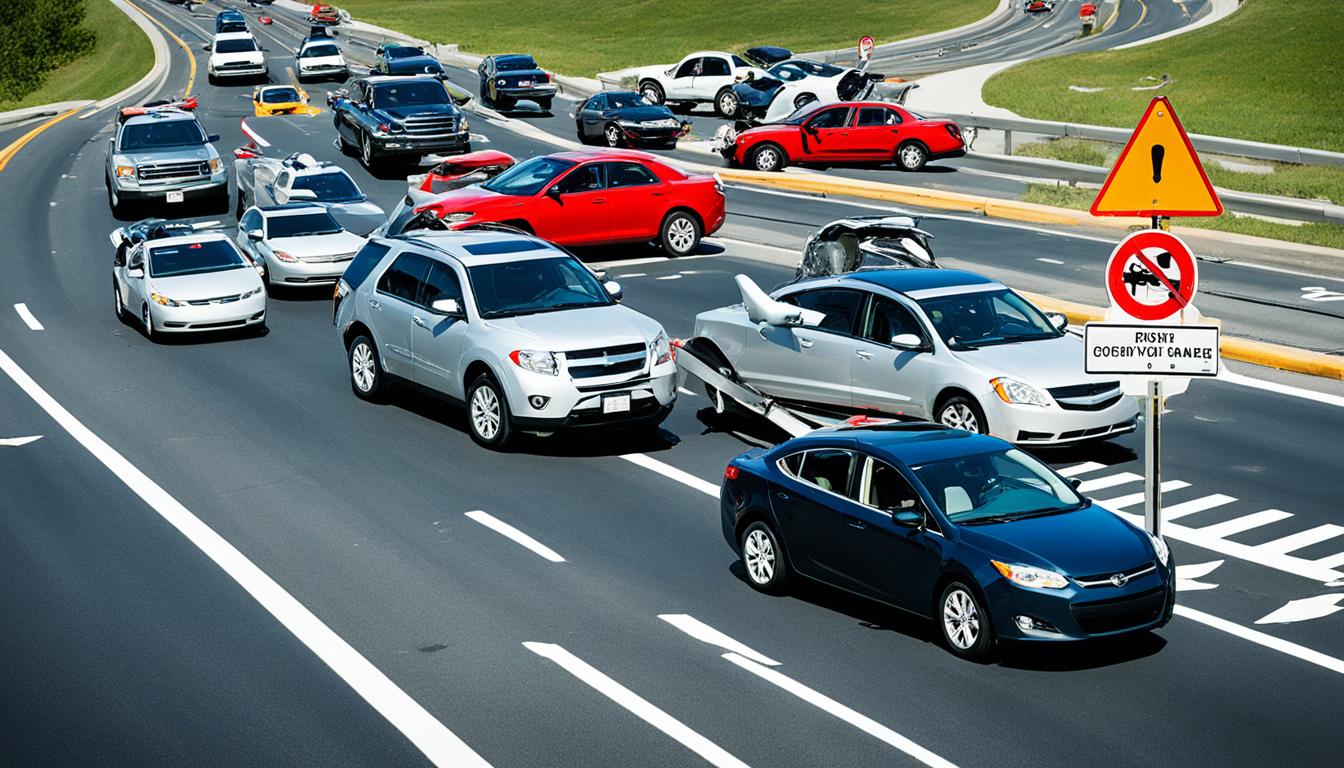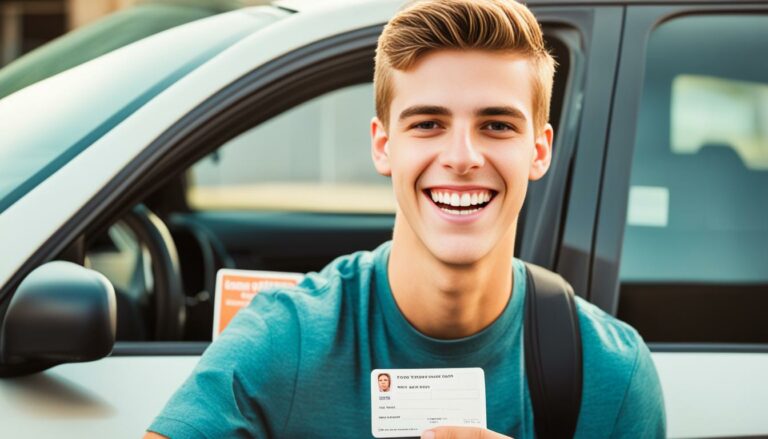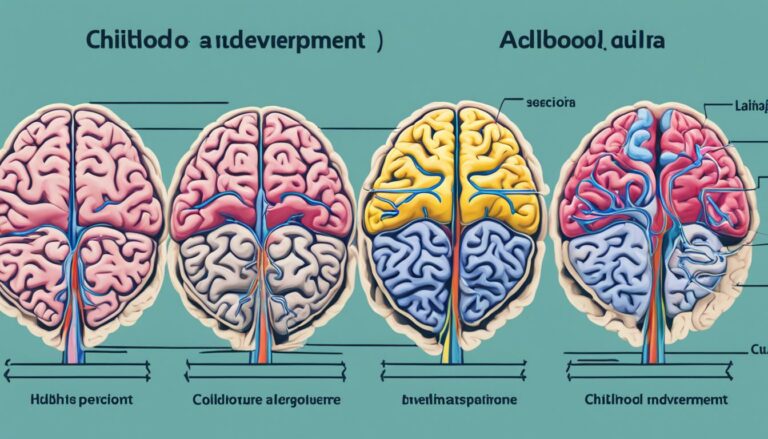Consequences of Driving: Risks & Realities Explained
Risk is an inherent part of the driving environment, and understanding the consequences of driving is crucial for promoting road safety. Despite the perception that the odds of being in a vehicular crash are low, the reality is that driving carries significant risks. In fact, more than 235,000 traffic crashes occurred in Florida in 2010 alone, resulting in 2,444 deaths and nearly 200,000 injuries.
Driving patterns, such as traveling in congested and low visibility traffic conditions or driving under the influence of alcohol, significantly increase the risk of a crash. It’s important for drivers to recognize and evaluate their level of risk and take steps to manage it. This includes practicing defensive driving techniques, such as maintaining a thorough visual search and positioning the vehicle for increased safety, as well as avoiding distractions while behind the wheel.
Key Takeaways:
- Driving involves inherent risks that can result in injury, damage, or loss.
- More than 235,000 traffic crashes occurred in Florida in 2010 alone.
- Driving patterns and behaviors significantly increase the risk of a crash.
- Practicing defensive driving techniques can help reduce the likelihood of accidents.
- Avoiding distractions while driving is essential for managing risk.
Understanding the Probability of Risk in Driving
Risk is an inherent part of the driving environment, and it is crucial for drivers to understand the probability of a dangerous event occurring. Factors such as fatigue, impairment, distractions, and road conditions can increase the likelihood of a crash. Evaluating the risk factors, including one’s own well-being, the conditions of the roadway, and the actions of other road users, is essential. By being aware of these factors and practicing defensive driving, drivers can effectively manage and reduce their risk of being involved in a crash.
Consequences of Risky Driving Behaviors

Engaging in risky driving behaviors can have severe consequences. One such behavior is speeding, which not only increases the risk and severity of a crash but also reduces the effectiveness of occupant protection equipment, such as seat belts. When driving at high speeds, the force of impact in a collision is greater, leading to more severe injuries. Additionally, the increased momentum reduces the effectiveness of seat belts in restraining occupants, potentially resulting in more significant harm.
Another consequence of risky driving behaviors is the increased stopping distance after perceiving a danger. When drivers are traveling above the speed limit or engaging in aggressive maneuvers, they require more time and distance to come to a complete stop. This can be critical in avoiding a collision or minimizing the impact when a crash is unavoidable.
In the event of a crash, the consequences of risky driving can be devastating. Drivers who engage in dangerous behaviors are more likely to suffer severe injuries compared to those who follow safe driving practices. This can lead to long-term physical and emotional consequences, impacting the quality of life for both the driver and their loved ones.
Speed-related crashes also have economic implications. The cost of property damage, medical expenses, and insurance premiums can be significantly higher in speed-related accidents. Furthermore, the increased fuel consumption associated with speeding can lead to unnecessary financial expenses for drivers.
It is essential for drivers to be aware of these consequences and make responsible choices behind the wheel. By obeying speed limits, practicing defensive driving, and avoiding risky behaviors, we can all contribute to safer roads and protect ourselves and others from the potential fallout of reckless driving.
| Consequences of Risky Driving Behaviors | |
|---|---|
| Increased risk and severity of crashes | |
| Reduced effectiveness of occupant protection equipment | |
| Increased stopping distance | |
| More severe injuries in the event of a crash | |
| Economic implications of speed-related crashes | |
| Increased fuel consumption |
Factors that Contribute to Risky Driving

Various factors can contribute to risky and aggressive driving behaviors. It’s essential for drivers to recognize these factors and understand their impact on road safety. Let’s explore some of the key factors:
- Traffic Congestion: Heavy traffic and congestion can be stressful and frustrating, leading some drivers to exhibit aggressive behaviors. Speeding, lane weaving, and tailgating are common responses to traffic congestion, but they significantly increase the risk of accidents.
- Running Late: The pressure of being behind schedule can tempt drivers to engage in risky behaviors to reach their destination on time. When rushing, drivers may speed, change lanes abruptly, or engage in reckless maneuvers, putting themselves and others at risk.
- Anonymity: The feeling of detachment when inside a vehicle can contribute to aggressive driving. Some drivers may feel less accountable for their behavior when shielded by the anonymity provided by their vehicle, leading to a more aggressive driving style.
- Disregard for Others and the Law: Some individuals consistently exhibit aggressive driving behaviors due to a disregard for the rights and safety of others on the road. These drivers may habitually speed, tailgate, ignore traffic laws, and engage in confrontational behavior.
By understanding these factors, drivers can make a conscious effort to avoid engaging in risky driving behaviors. It starts with acknowledging the impact of traffic congestion, managing time effectively to avoid rushing, fostering empathy towards others, and adhering to traffic laws and regulations.
Remember, safe driving is everyone’s responsibility, and by making conscious choices, we can contribute to a safer and more harmonious driving environment.
The Dangers of Speeding

Speeding is a significant risk factor in motor vehicle crashes and can result in serious consequences. In 2021 alone, speeding was responsible for 12,330 fatalities. Speeding not only endangers the life of the speeder but also everyone else on the road, including law enforcement officers. It is important to understand that speed limits are set to ensure road safety and that traveling faster than the speed limit increases the risk and severity of a crash. Drivers should prioritize safety over speed and adhere to speed limits to prevent accidents and protect lives.
Statistics on Speeding-related Fatalities
“Speeding kills over 12,000 people each year in the United States. It is a dangerous behavior that puts not only the driver at risk but also innocent lives on the road.”
Speeding is not worth the risk. When drivers exceed the speed limit, they have less time to react to unexpected events, such as pedestrians crossing the road or sudden traffic congestion. Additionally, the force of impact increases with speed, leading to more severe injuries and a higher likelihood of fatalities in the event of a crash.
It is crucial for drivers to recognize the importance of adhering to speed limits and make responsible choices while behind the wheel. By driving at a safe and legal speed, we can significantly reduce the number of preventable accidents and protect ourselves and others on the road.
| Consequences of Speeding | Statistics |
|---|---|
| Increase in crash risk | 1.6 times more likely to cause a crash |
| Severity of injuries | Speeding contributes to more severe injuries in crashes |
| Impact on fuel consumption | Driving faster than the speed limits increases fuel consumption |
| Economic implications | Speed-related crashes result in higher economic costs |
Let’s prioritize the safety of ourselves and others on the road by obeying speed limits and driving responsibly. By doing so, we can contribute to a safer and more harmonious driving environment.
Understanding Drug-Impaired and Drunk Driving

Driving under the influence of drugs or alcohol is extremely dangerous and can have severe consequences. Even a small amount of alcohol can impair a driver’s abilities. In Virginia, for example, a first offense for drunk driving can result in fines ranging from $250 to $2,500 and up to a year of jail time. Repeat offenses have even more severe penalties. Similarly, drug-impaired driving, whether due to marijuana, prescription drugs, or illegal narcotics, impairs a driver’s abilities and can lead to serious crashes.
Law enforcement agencies are actively working to identify and deter impaired drivers, and drivers should always make responsible choices when it comes to consuming substances and driving.
It is essential to understand the risks and consequences of drug-impaired and drunk driving. These behaviors not only jeopardize the safety of the driver but also put the lives of other road users at risk. Impaired drivers have reduced reaction times, impaired judgment, and decreased coordination, making them more likely to cause accidents and harm themselves and others.
Law enforcement agencies often conduct sobriety checkpoints and use breathalyzer and drug recognition tests to identify impaired drivers. When an impaired driver is apprehended, they may face legal consequences, including fines, license suspension, mandatory participation in rehabilitation programs, and even imprisonment. The severity of these consequences depends on the jurisdiction and whether it is a first offense or a repeat offense.
Drivers should always prioritize safety and make responsible decisions. It is crucial to never drive under the influence of drugs or alcohol, and if impaired, find alternative transportation options or designate a sober driver. By doing so, we can prevent unnecessary accidents and protect the well-being of everyone on the road.
The Impact of Risky Driving on Others

Risky driving not only puts the driver at risk but also impacts other road users, including pedestrians, cyclists, and other drivers. When drivers engage in risky behaviors such as speeding, they increase the chances of losing control of their vehicles, posing a danger to everyone around them.
It is crucial for all drivers to be considerate and share the road responsibly, prioritizing the safety of themselves and others. When encountering speeders on the road, here are some tips to keep in mind:
- Give them plenty of space: Maintain a safe distance from speeding vehicles to allow for unexpected maneuvers.
- Adjust your driving: Be aware of the speeders and adjust your driving accordingly. Stay attentive and focused on the road.
- Report aggressive behavior: If a driver is behaving aggressively or following too closely, it is essential to call the police and report the incident. Provide them with accurate details to ensure appropriate action is taken.
By promoting safe driving practices and avoiding risky behaviors, we can all contribute to a safer road environment. Remember, responsible driving not only protects ourselves but also helps protect others who share the road with us.
| Impact of Risky Driving on Others |
|---|
| Increased risk for pedestrians and cyclists |
| Potential for severe injuries or fatalities |
| Higher chances of property damage |
| Emotional distress for affected individuals |
| Disruption of traffic flow |
Efforts to Manage Risk and Improve Road Safety
The National Highway Traffic Safety Administration (NHTSA) is actively working to address speeding and improve road safety. One of its key initiatives is the speed management program, which provides guidance and resources for state and local governments to develop effective speed management strategies.
Through this program, NHTSA emphasizes the importance of setting safe and reasonable speed limits. By considering factors such as road conditions, traffic patterns, and surrounding communities, speed limits can be tailored to enhance safety on specific roads.
Road design and engineering measures also play a crucial role in managing risk and improving road safety. NHTSA encourages the implementation of traffic calming measures, such as roundabouts, speed bumps, and lane narrowing, to encourage drivers to reduce their speed.
Enhanced enforcement efforts are another focus of NHTSA’s action on speeding. By collaborating with law enforcement agencies, NHTSA provides training on speed-measuring devices and enforcement techniques. This helps ensure that speed limits are effectively enforced, deterring drivers from engaging in high-risk behaviors.
To promote communication and education on high-risk driving behaviors, NHTSA works to raise awareness of the dangers of speeding. It emphasizes the importance of responsible driving and encourages drivers to make informed decisions when it comes to speed management.
“By implementing comprehensive speed management strategies, we can reduce the number of speeding-related crashes and save lives on our roads.” – NHTSA
NHTSA’s Speed Management Program Components
| Component | Description |
|---|---|
| Speed Limit Setting | Guidelines for establishing safe and reasonable speed limits based on factors such as road conditions and traffic patterns. |
| Road Design and Engineering | Implementation of measures like traffic calming devices to encourage drivers to reduce their speed. |
| Enhanced Enforcement | Collaboration with law enforcement agencies to provide training on speed-measuring devices and enforcement techniques. |
| Communication and Education | Raising awareness of the dangers of speeding and promoting responsible driving behaviors through outreach programs. |
NHTSA’s efforts to manage risk and improve road safety aim to create a culture of responsible driving. By implementing comprehensive speed management strategies, NHTSA strives to reduce the number of speeding-related crashes and save lives on our roads.
Understanding the Consequences of Risky Driving Choices
Engaging in risky driving behaviors can have significant financial and legal consequences. When drivers violate traffic laws, such as speeding or driving under the influence, they expose themselves to a range of penalties and risks. These consequences can go beyond monetary fines and impact various aspects of their lives.
One of the immediate consequences of risky driving is the financial burden of fines. Speeding tickets, for example, can result in hefty fines that vary depending on the speed recorded and the jurisdiction. Additionally, driving under the influence (DUI) convictions can lead to substantial monetary penalties, as well as increased insurance premiums.
Legal consequences are another concern for drivers who engage in risky behaviors. Violating traffic laws can result in the suspension or revocation of driving licenses, restricting individuals’ ability to commute for work or personal activities. In the case of DUI convictions, drivers may face the possibility of jail time, community service, or mandatory DUI education programs.
Moreover, the long-term impact of a DUI conviction can extend beyond immediate penalties. A DUI on a person’s driving record can negatively affect employment prospects, particularly for jobs that require a clean driving record or involve operating vehicles. Some employers prioritize safe and responsible driving and may view a DUI conviction as a red flag, potentially leading to limited job opportunities and even affecting future paychecks. This long-term impact highlights the importance of making responsible choices while on the road.
To better understand the financial and legal consequences of risky driving, let’s take a closer look at the potential penalties drivers may face for specific offenses:
DUI Conviction Penalties:
- Fines
- Driver’s license suspension
- Jail time
- Mandatory DUI education programs
Speeding Violation Penalties:
- Fines
- Potential increase in insurance premiums
- Points on the driving record
- License suspension for repeat offenses
It is crucial for drivers to consider the potential financial and legal consequences of their actions. By making responsible choices and adhering to traffic laws, drivers can protect themselves, their finances, and their future opportunities. Safe and responsible driving benefits not only the individual but also the community at large, promoting a safer and more secure road environment.
The Importance of Defensive Driving and Risk Evaluation
Defensive driving techniques are essential for reducing the risk of accidents and ensuring safer journeys. By implementing these techniques, drivers can take proactive measures to protect themselves and others on the road.
Some key defensive driving techniques include:
- Maintaining a thorough visual search: Always scan the road ahead, check side mirrors regularly, and be aware of blind spots.
- Having a plan for emergency situations: Anticipate potential hazards and be prepared to react quickly and appropriately.
- Avoiding tailgating: Maintain a safe following distance to allow for adequate reaction time in case the vehicle ahead makes a sudden stop.
- Positioning the vehicle for increased safety: Stay in the appropriate lane and avoid unnecessary lane changes. Position the vehicle away from potential hazards whenever possible.
- Obeying traffic controls and right-of-way rules: Adhere to posted speed limits, traffic signals, and stop signs. Yield to pedestrians and other vehicles when necessary.
- Driving considerately: Be courteous to other drivers and share the road responsibly.
It is also crucial for drivers to continually evaluate the risk factors present in their driving environment. This includes:
- Assessing their own physical and mental state: Recognize any impairment or distraction that may affect driving capabilities, such as fatigue or emotional distress.
- Evaluating road conditions: Consider factors such as weather, visibility, and road construction that may pose additional risks.
- Observing the actions of other road users: Stay vigilant and anticipate the behavior of other drivers, pedestrians, and cyclists, adjusting driving accordingly.
By practicing defensive driving and evaluating risk factors, drivers can effectively mitigate the likelihood of accidents and promote overall road safety.
It’s crucial for drivers to remember that defensive driving is not just about protecting themselves—it’s about protecting everyone on the road. By being alert, cautious, and proactive, drivers can play a significant role in preventing accidents and ensuring the well-being of themselves and others.
Defensive Driving Techniques Infographic
| Defensive Driving Techniques | Benefits |
|---|---|
| Maintaining a thorough visual search | Enhanced awareness of potential hazards |
| Having a plan for emergency situations | Prompt and effective response to unexpected events |
| Avoiding tailgating | Ample reaction time to prevent rear-end collisions |
| Positioning the vehicle for increased safety | Reduced risk of being involved in a collision |
| Obeying traffic controls and right-of-way rules | Improved compliance with traffic laws and regulations |
| Driving considerately | Promoting a positive and safe driving culture |
Conclusion
Driving is not without risks, and engaging in risky driving behaviors can have severe consequences. Whether it’s speeding, impaired driving, or aggressive behaviors, these actions not only endanger the driver’s life but also put other road users at risk. To promote road safety, it is crucial for drivers to understand and evaluate the risks associated with driving.
Practicing defensive driving, which includes maintaining a thorough visual search, obeying traffic rules, and driving considerately, can significantly reduce the chances of accidents. By making responsible choices and prioritizing safety, drivers can help prevent accidents and protect themselves and others on the road.
It’s important to remember the potential consequences that can result from risky driving behaviors. Violating traffic laws can lead to fines, license suspensions, and even jail time. Additionally, engaging in impaired driving can have long-term impacts on job prospects and future earnings. Therefore, it is crucial for drivers to make responsible choices and prioritize safety while on the road.
By understanding the driving risks and consequences of risky driving behaviors, drivers can contribute to a safer road environment. By practicing defensive driving, adhering to traffic laws, and making responsible choices, drivers can help prevent accidents and protect themselves and others. Let’s all prioritize safety and make our roads safer for everyone.
FAQ
What are the consequences of risky driving behaviors?
Engaging in risky driving behaviors can have severe consequences, including an increased risk and severity of crashes, reduced effectiveness of occupant protection equipment, economic implications, and increased fuel consumption.
What factors contribute to risky driving?
Factors that contribute to risky driving include traffic congestion, the pressure of being late, anonymity while inside a vehicle, and disregard for others and the law.
Why is speeding dangerous?
Speeding is dangerous because it not only increases the risk and severity of crashes but also reduces the effectiveness of occupant protection equipment and can lead to more severe injuries and economic implications.
What are the consequences of driving under the influence?
Driving under the influence of drugs or alcohol is extremely dangerous and can have severe consequences, including fines, jail time, license suspensions, and long-term impacts on job prospects.
How does risky driving impact others on the road?
Risky driving not only puts the driver at risk but also impacts other road users, including pedestrians, cyclists, and other drivers, by increasing the likelihood of accidents and endangering their safety.
How is road safety being improved?
Efforts to improve road safety include the National Highway Traffic Safety Administration’s speed management program, which focuses on strategies like setting safe speed limits, applying road engineering measures, enhancing enforcement, and promoting communication and education on high-risk driving behaviors.
What are the legal and financial consequences of risky driving?
Engaging in risky driving behaviors can have significant legal and financial consequences, including fines, license suspensions, jail time, and long-term impacts on job prospects and future paychecks.
What is defensive driving and why is it important?
Defensive driving is a technique that helps manage and reduce the risk of accidents by maintaining a thorough visual search, having an emergency plan, avoiding tailgating, obeying traffic controls, and driving considerately. It is important because it helps drivers mitigate the likelihood of accidents and ensure safer journeys.
What are the risks associated with driving?
Driving comes with inherent risks, and engaging in risky driving behaviors can have severe consequences. It is important to prioritize safety, understand the potential consequences, and make responsible choices while on the road.







